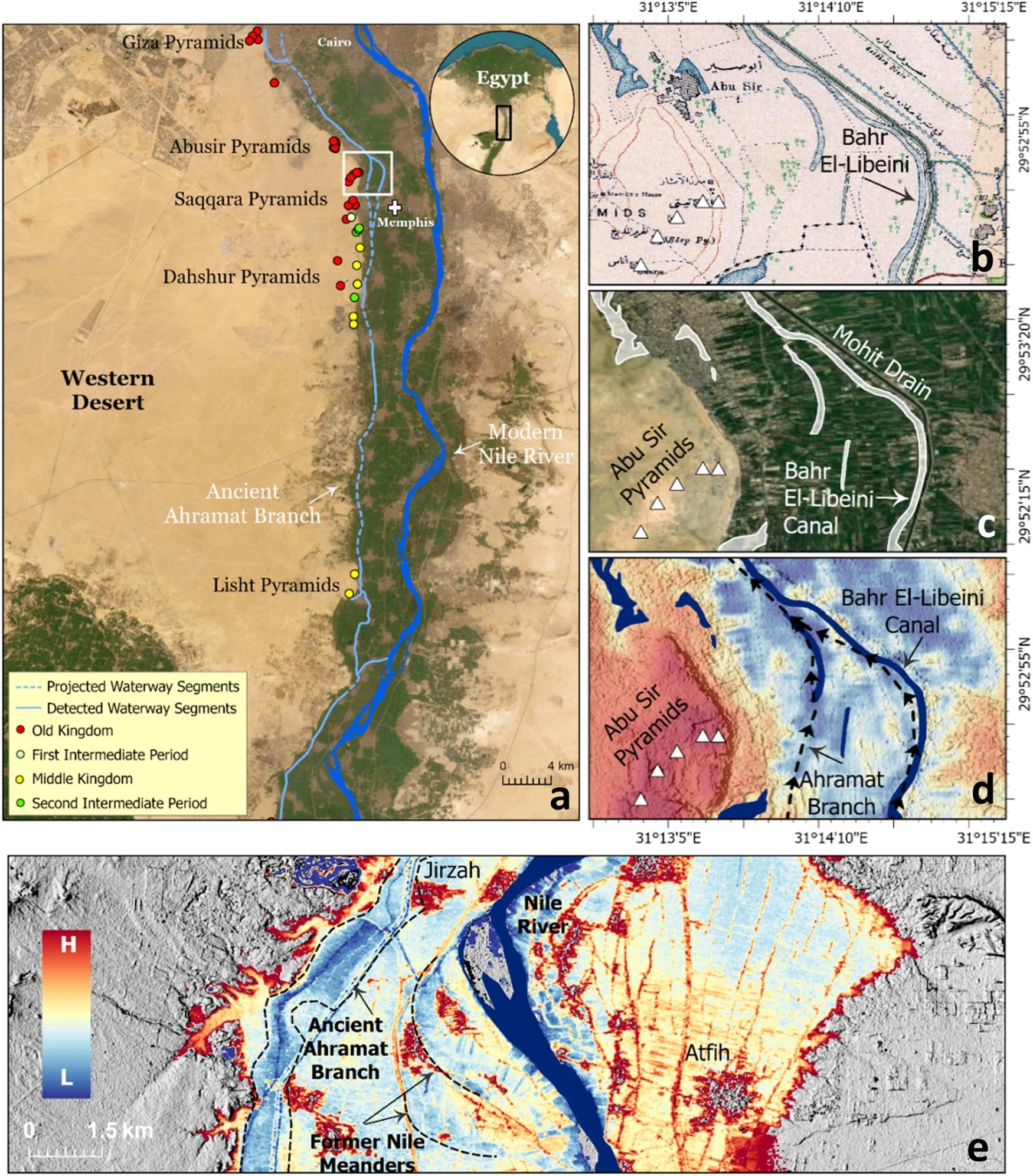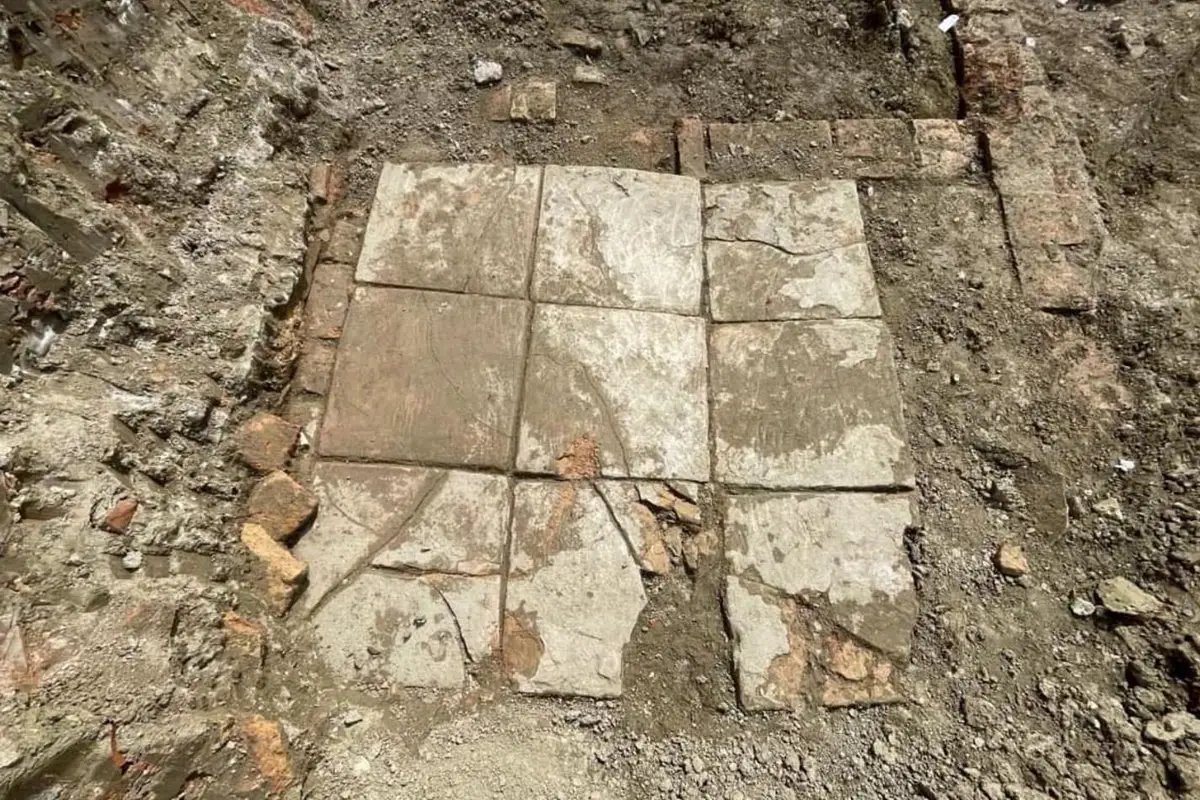Archaeology
Ancient celestial map found at Castelliere di Rupinpiccolo

Castelliere di Rupinpiccolo is an ancient hillfort, located in the Province of Trieste, Italy.
The hillfort housed a fortified settlement that emerged during the Middle Bronze Age, with archaeological evidence indicating that occupation continued through the Iron Age until the site was abandoned around the 5th century AD.
In a press announcement by the Italian National Institute of Astrophysics (INAF), two large circular stones measuring 50 centimetres in diameter were recently discovered at the entrance to the hillfort.
According to Paolo Molaro from INAF, and researchers from the Ca’ Foscari University of Venice and ICTP, one of the stones is a representation of the sun, while the other is a carved celestial map dated to the 4th century BC.
Image Credit : INAF
A study of the stones has been published in the German astronomy magazine, Astronomische Nachrichten, in which the study authors have identified that the celestial map depicts the sky above Rupinpiccolo from around 2,500-years-ago, making the discovery one of oldest known celestial maps founds in Italy.
The team have identified 29 engravings on the stone, which correspond precisely to the constellations of Scorpius, Orion, the Pleiades and Cassiopeia. Based on the angle of the cut marks in the stone, the researchers suggest that the carvings were likely made by the same individual using a hammer and a rudimentary metal chisel with a 6-7 mm tip.
A specific star engraved on the stone, identified as Theta Scorpii, has become obscured from sight at Castelliere di Rupinpiccolo due to its low position on the horizon. However, upon using the Stellarium program to simulate the night sky, researchers discovered that this star was observable from the ancient hillfort around 400 BC.
The 29th engraving is of particular interest as it has no correlation with celestial models. Instead, the study authors propose that it could actually be a representation of a supernova, a transient phenomenon that appeared suddenly in the night sky in ancient times for days or months, and then fade away and disappear.
If this is indeed the case, the researchers suggest that tracing the focal point in the night’s sky by correlating with the 29th engraving, this could potentially reveal a black hole left behind by the supernova explosion.
Header Image Credit : INAF
This content was originally published on www.heritagedaily.com – © 2023 – HeritageDaily
Archaeology
Groundbreaking study reveals new insights into chosen locations of pyramids’ sites

A groundbreaking study, published in the journal Communications Earth & Environment, has revealed why the largest concentration of pyramids in Egypt were built along a narrow desert strip.
Since the beginning of the Pharaonic era, the Nile River has played a fundamental role in the rapid growth and expansion of the Egyptian civilisation.
The Nile provided sustenance and functioned as the primary mode of transportation for goods and building materials, which explains why most of the main cities of the Egyptian civilisation were built in close proximity to the banks of the Nile and its peripheral branches.
Over the centuries, the primary channel of the Nile shifted laterally, causing these peripheral branches to silt up. As a result, population centres were cut off from the vital resources the river provided.
Image Credit : Eman Ghoneim et al
This is apparent with the pyramids along the Western Desert Plateau, where a majority of the pyramids are concentrated along a narrow desert strip several kilometres from the current primary channel of the Nile.
Using a combination of radar satellite imagery, geophysical data, and deep soil coring, the study has investigated the subsurface structure and sedimentology in the Nile Valley adjacent to the pyramid clusters.
This has revealed an extinct branch of the primary channel called the Ahramat Branch, which was connected to the pyramids of the Old and Middle Kingdoms via causeways and their Valley Temples.
According to the study authors: “The Ahramat Branch played a role in the monuments’ construction and was simultaneously active and used as a transportation waterway for workmen and building materials to the pyramids’ sites.”
The eastward migration and abandonment of the Ahramat Branch could be attributed to gradual movement of the river to the lower-lying adjacent floodplain or tilting of the Nile floodplain toward the northeast as a result of tectonic activity, as well as windblown sand incursion due to the branch’s proximity to the Western Desert Plateau.
Header Image Credit : Eman Ghoneim et al
Sources : Ghoneim, E., Ralph, T.J., Onstine, S. et al. The Egyptian pyramid chain was built along the now abandoned Ahramat Nile Branch. Commun Earth Environ 5, 233 (2024). https://doi.org/10.1038/s43247-024-01379-7
This content was originally published on www.heritagedaily.com – © 2023 – HeritageDaily
Archaeology
Archaeologists find Roman villa with ornate indoor plunge pool

Archaeologists from the National Institute of Cultural Heritage have uncovered a Roman villa with an indoor plunge pool during excavations at the port city of Durrës, Albania.
During antiquity, Durrës was founded by Ancient Greek colonists from Corinth and Corcyra.
The colony emerged into a major trading centre, which during the Roman period was annexed into the expanding territory of the Roman Republic following the conclusion of the Illyrian Wars.
By the 4th century, the city (named Dyrrachium), emerged as the capital of the Roman province of Epirus nova, covering the region of Ancient Epirus.
Image Credit : IKTK
Archaeologists excavating a former residential part of the ancient city have uncovered a high status Roman villa that dates from between the 1st and 4th century AD.
The villa interior contains an indoor pool, richly decorated with frescoes on the walls and mosaic flooring with tiles and inlays of marble, stone, glass and ceramics. Located adjacent to the pool are shallow square basins lined with waterproof mortar, believed to be the remains of an ancient water feature.
Within the northern area of the excavation site, archaeologists found a large brick floor from a thermae, a Roman bath, and further traces of walls from the wider complex.
In the western area, the team discovered fragments of relief stucco that was used to decorate the walls and ceilings of the villa. The reliefs depict anthropomorphic and floral motifs, further indicating the wealth of the villa inhabitants.
According to the archaeologists, the villa was destroyed by an earthquake in the 4th century, corresponding with ancient sources that describe a powerful earthquake causing buildings to collapse and the city defences to crumble.
Header Image Credit : IKTK
Sources : National Institute of Cultural Heritage
This content was originally published on www.heritagedaily.com – © 2023 – HeritageDaily
-

 Ghosts2 years ago
Ghosts2 years agoZozo: The Ouija Board Demon
-

 Space2 years ago
Space2 years agoScientists claim to have found the answer what existed before the Universe
-

 Ghosts2 years ago
Ghosts2 years agoOld Coot of Mount Greylock
-
Archaeology1 year ago
New discoveries at Ekʼ Balam during conservation works
-

 General3 years ago
General3 years agoUC San Francisco engaging in horrifying experiments, organ harvesting of live babies in the name of “science”
